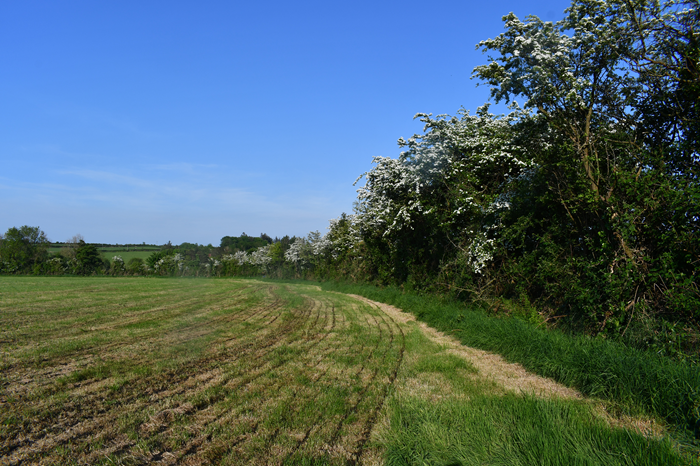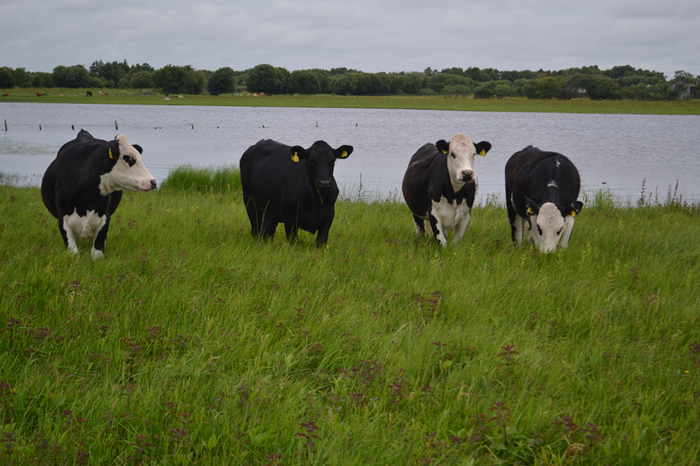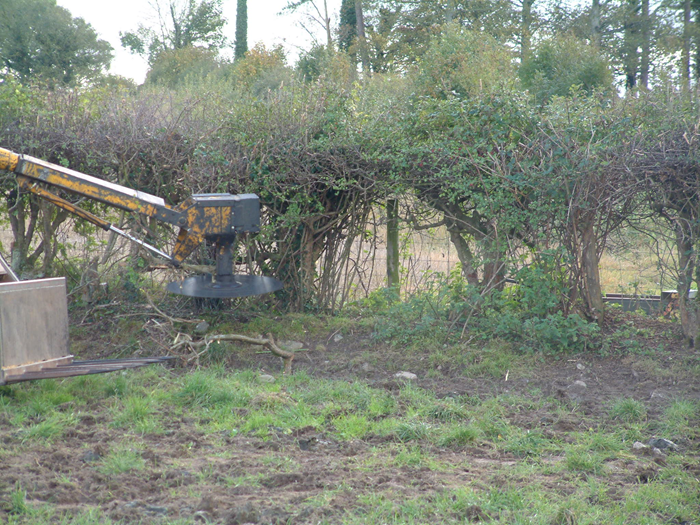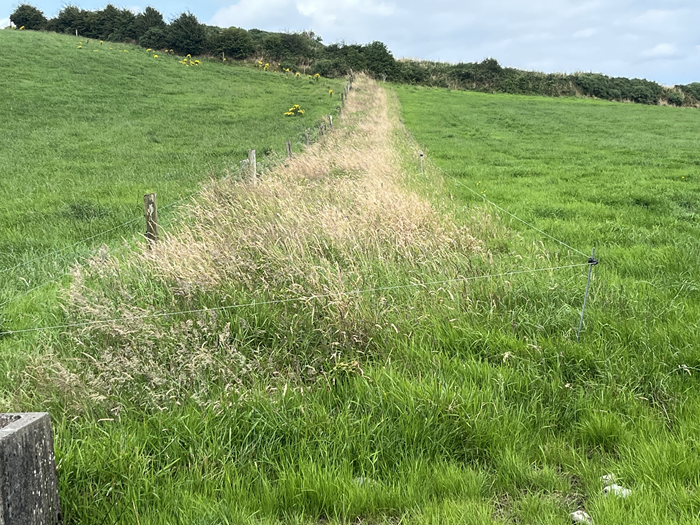21 May 2025
What is biodiversity and how can we help?
As National Biodiversity Week occurs from May 16-25, Countryside Management Specialist, Catherine Keena and Saorla Kavanagh, Researcher in Farmland Biodiversity, share some key insights into the biodiversity that surrounds us in our day-to-day farming activities.
A climate and biodiversity crisis was declared in Ireland in 2019. Over 20% of assessed species in Ireland are threatened with extinction, and 85% of those 59 most precious EU habitats are of unfavourable status. We have lost over 30% of our semi-natural grasslands in the past decade and more than half of our native plants are in decline. We need to know about biodiversity to appreciate it and we need to appreciate it to look after it.
Biodiversity includes flora, fauna and the habitats in which they exist. Flora includes trees and flowers, but also the ‘lower’ species of mosses, lichen and fungi. Fauna includes birds, mammals, amphibians, fish and a wide range of invertebrates.
Native Irish flora and fauna
Not all flora and fauna are good for biodiversity in Ireland. Native Irish flora and fauna have been in Ireland for 10,000 years since the last ice age. They are in tune with each other with regard to their life cycle, where timing is critical, such as bud burst, flowering, fruiting and leaf fall. For example, the Brown hairstreak butterfly caterpillar feeds on delicate new blackthorn leaves after hatching from eggs, which have overwintered on the shrub. Holly blue butterflies breed on holly. Brimstone butterfly caterpillars live on alder buckthorn.
Invasive Alien Species
Invasive Alien Species are the real baddies, and approximately 100 species of both flora and fauna are present in Ireland. Their main effect on biodiversity is that they replace and eliminate native Irish species, rather than living in harmony.
Ornamental Species
Ornamental species are bred for their appearance to be attractive to humans and are not as good for supporting native biodiversity. They belong in the garden and caution should be taken if planting non-native species is being considered.
Our native bluebell has drooping flowers on one side of a gracefully arching stalk suiting bumblebees which land upside down to access the flower. The introduced Spanish bluebell is paler and sturdier with flowers all around the stalk. The native Irish bluebell hybridises with the Spanish bluebell, resulting in a new cross-bred species. Both the Spanish bluebell and the new hybrid bluebell are very fertile and threaten our native bluebell. This highlights why planting ‘wild’ flowers in the countryside is not good for biodiversity and can cause harm to our native Irish biodiversity. Native wildflowers grow wild naturally and are not sown, their seed exists in the soil and – if given time and the correct conditions – they will grow.
Introduced Species
Introduced species are not as good for biodiversity as native species – examples which surprise people are beech, chestnut and sycamore trees. They have been here for a few hundred years, but are not found out in fields – only where people have planted them.
Noxious weeds
The Noxius Weed Act, 1936 governs the control of noxius weeds in Ireland; it is an offence for owners and occupiers of land not to prevent the spread of specified noxious weeds. This, however, does not necessarily mean that the presence of noxious weeds is bad for biodiversity.
Ragwort, docks and thistles, although requiring control to comply with legislation and Conditionality, are just three examples of noxious weeds that are native and support biodiversity. These species are essential for the survival of associated native fauna.
- Ragwort is poisonous to livestock – either when grazed fresh or consumed through silage or hay – and has been responsible for livestock fatalities. However, it can be a host plant to over 140 different insect species and is a critical species for the lifecycle of nine moth species in Ireland.
- Thistles can be invasive in grassland with creeping thistle spreading by rhizomes underground and spear thistle seed dispersing by wind from their fluffy seed heads. However they provide a food supply for pollinators and some small seed-eating birds.
- Docks can be aggressive and invasive species in grassland. They provide supporting habitat for a wide range of invertebrates.
Some other noxious weeds are:
- Blackgrass which was designated from 14 May 2025 is found mostly in arable systems and poses a significant weed control challenge
- Common barberry has a fungus which causes black stem rust in cereals, which was a problem before effective fungicides were available
- Male wild hop in the past caused problems in brewing for commercial hop crops
- Spring wild oat is difficult to control in cereals
Minding our biodiversity
The quest for neatness should not overrule ecological considerations. Avoid a single species focus – without consideration of effect on ALL biodiversity. Follow the key principles in the following order of importance:
1). Identify and Retain: existing habitats. Before you start it is important to know what biodiversity exists on the farm already. Every farm has some biodiversity value but some farms can have more than others. Take a closer look and observe nature on your farm. A new hedge or woodland will take hundreds of years (if ever) to acquire the rich associated biodiversity of old native hedges and woodland. A species rich grassland can never be replaced.

Retain existing habitats – Treeline hedges are full of biodiversity in the canopy. Under Conditionality, all hedges must be retained unless in defined exceptional circumstances
2). Maintain: according to Best Practice. While it is often better to let nature take its course, management is required to maintain semi-natural habitats. One example is species rich grassland which needs to be grazed or cut to prevent scrub taking over with the loss of grassland biodiversity.

Maintain extensive grassland by grazing and not applying lime and fertiliser
3). Enhance and connect: with care not to cause harm. Examples are the rejuvenation of hedges by laying or coppicing or prescribed burning of dry heaths where there is a follow on maintenance plan for sustainable grazing

Enhance Stumpy ‘upside down toilet brush’ hedges by coppicing at ground level.
4). Create: more space for nature but do not replace existing habitats. Natural regeneration is best (Don’t sow, let it grow). If sowing trees or hedges – use native species of Irish provenance, meaning the plants are grown from seed collected from native trees growing in Ireland. Such trees are in tune with Irish biodiversity and reduce the risk of importing pests and diseases.

Create more space for biodiversity by fencing off grass margins and manage by cutting or grazing in autumn to remove the vegetation.
Find out more about farmland biodiversity
- Visit the Teagasc Biodiversity & Countryside webpage here.
- If interested in joining a Farming and Biodiversity National Network and contributing your biodiversity knowledge please email farmbionet@teagasc.ie to find out details.
- Enniscorthy Tidy Towns Hedgerow Walk Thursday with Catherine Keena on 22 May at 7pm
- Visit here for other National Biodiversity Week 2025 events
- Extensive Grassland Biodiversity Event in Birr with Guest Speakers John Feehan, John Muldowney and Helen Sheridan and a walk in Birr Castle Meadow on Thursday 12 June 2025. Must book on teagasc.ie/biodiveristyevent
